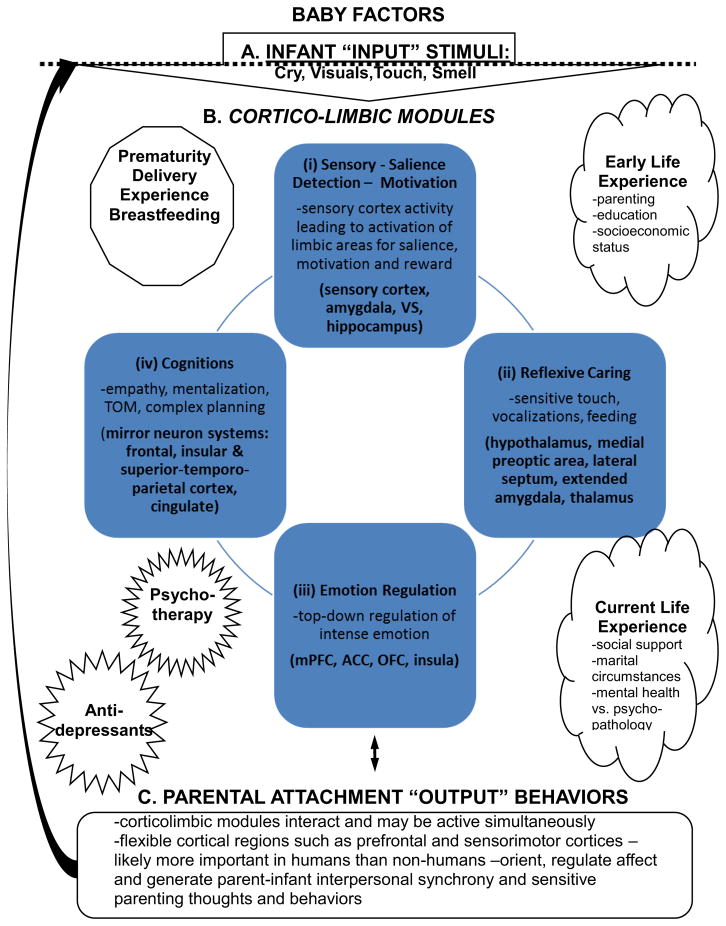Figure 1. Human Parental Circuits.
Brain regions expected to be important to human parenting. This based on human and animal studies.
Based on brain imaging of parents to this point, the following model is presented to stimulate discourse on the brain basis of parenting behaviors. First, key parenting sensory signals, including cry, visuals as well as touch and smell from baby (A) activate in parallel a set of corticolimbic circuits (B) to (i) analyze the sensory input and update saliences toward motivation and reward and coordination of other modules for (ii) reflexive caring, (iii) emotion regulation, and (iv) complex cognitions, including mentalization, empathy and theory of mind. The output (C) of these modules forms the basis of parental sensitivity and influencing child development. This inclusive and general model may be dissected in future studies involving different stimuli and specific measures of behavior and cognition.

